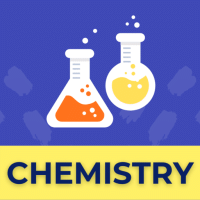Class 11 Exam > Class 11 Questions > Why there is a increase in group 1 elements i...
Start Learning for Free
Why there is a increase in group 1 elements in reactivity but decreasing reactivity among group 17 elements?
Most Upvoted Answer
Why there is a increase in group 1 elements in reactivity but decreasi...
Chemical reactivity of alkali metals is exhibited by the loss of an electron leading to the formation of cation. The tendency to lose an electron depends upon the ionisation enthalpy and ionisation enthalpy decreases down the group. Hence, the reactivity increases down the group (Li < Na < K < Rb < Cs).
On the other hand, chemical reactivity of halogens is shown by the gain of an electron leading to the formation of anion. The tendency to gain an electron depends upon their electrode potentials. Their electrode potentials decrease from fluorine to iodine. Therefore, reactivity decreases down the group (F > Cl > Br > I). Furthermore, the tendency to gain an electron is also related to electron gain enthalpy.
On the other hand, chemical reactivity of halogens is shown by the gain of an electron leading to the formation of anion. The tendency to gain an electron depends upon their electrode potentials. Their electrode potentials decrease from fluorine to iodine. Therefore, reactivity decreases down the group (F > Cl > Br > I). Furthermore, the tendency to gain an electron is also related to electron gain enthalpy.
Electron gain enthalpy becomes less and less negative as we move from chlorine to iodine. Hence, reactivity decreases from chlorine to iodine. Fluorine has less electron gain enthalpy but it is the most reactive due to its low bond dissociation enthalpy.

Community Answer
Why there is a increase in group 1 elements in reactivity but decreasi...
Why does the reactivity of halogens decreases down group 7.
With group 7 elements, the outer shell has 7 electrons. This means that an electron must be gained. Electrons are attracted to the nucleus, therefore if there is a short distance between the outer shell and the nucleus, it will react more. As you go down the group, there are more electron shells which causes shielding as electrons repel. The more repulsion between electrons, the further away the outer shell will be from the nucleus. This would make it harder for the element with many shells to gain an electron so reactivity will be lower. Hope this helps
With group 7 elements, the outer shell has 7 electrons. This means that an electron must be gained. Electrons are attracted to the nucleus, therefore if there is a short distance between the outer shell and the nucleus, it will react more. As you go down the group, there are more electron shells which causes shielding as electrons repel. The more repulsion between electrons, the further away the outer shell will be from the nucleus. This would make it harder for the element with many shells to gain an electron so reactivity will be lower. Hope this helps

|
Explore Courses for Class 11 exam
|

|
Similar Class 11 Doubts
Question Description
Why there is a increase in group 1 elements in reactivity but decreasing reactivity among group 17 elements? for Class 11 2025 is part of Class 11 preparation. The Question and answers have been prepared according to the Class 11 exam syllabus. Information about Why there is a increase in group 1 elements in reactivity but decreasing reactivity among group 17 elements? covers all topics & solutions for Class 11 2025 Exam. Find important definitions, questions, meanings, examples, exercises and tests below for Why there is a increase in group 1 elements in reactivity but decreasing reactivity among group 17 elements?.
Why there is a increase in group 1 elements in reactivity but decreasing reactivity among group 17 elements? for Class 11 2025 is part of Class 11 preparation. The Question and answers have been prepared according to the Class 11 exam syllabus. Information about Why there is a increase in group 1 elements in reactivity but decreasing reactivity among group 17 elements? covers all topics & solutions for Class 11 2025 Exam. Find important definitions, questions, meanings, examples, exercises and tests below for Why there is a increase in group 1 elements in reactivity but decreasing reactivity among group 17 elements?.
Solutions for Why there is a increase in group 1 elements in reactivity but decreasing reactivity among group 17 elements? in English & in Hindi are available as part of our courses for Class 11.
Download more important topics, notes, lectures and mock test series for Class 11 Exam by signing up for free.
Here you can find the meaning of Why there is a increase in group 1 elements in reactivity but decreasing reactivity among group 17 elements? defined & explained in the simplest way possible. Besides giving the explanation of
Why there is a increase in group 1 elements in reactivity but decreasing reactivity among group 17 elements?, a detailed solution for Why there is a increase in group 1 elements in reactivity but decreasing reactivity among group 17 elements? has been provided alongside types of Why there is a increase in group 1 elements in reactivity but decreasing reactivity among group 17 elements? theory, EduRev gives you an
ample number of questions to practice Why there is a increase in group 1 elements in reactivity but decreasing reactivity among group 17 elements? tests, examples and also practice Class 11 tests.

|
Explore Courses for Class 11 exam
|

|
Signup to solve all Doubts
Signup to see your scores go up within 7 days! Learn & Practice with 1000+ FREE Notes, Videos & Tests.























